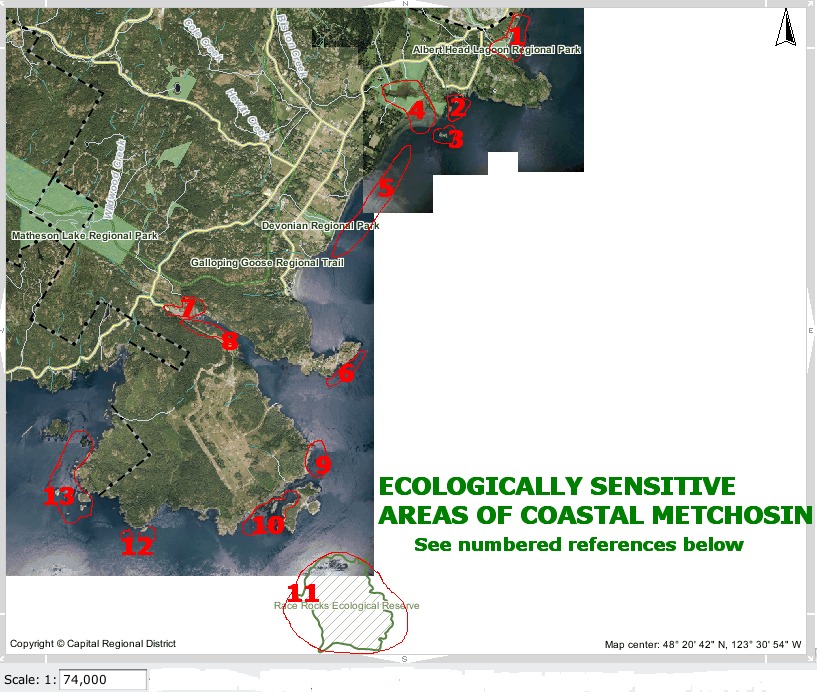Most of Metchosin’s shorelines could be considered as “Ecologically Sensitive” . The areas identified below however have a particularly high level of sensitivity.

This list does not necessarily include all ecologically sensitive areas. Arguments could be made for the complete coastline being ecologically sensitive.
1. Lagoon with shorebird habitat, sensitive dune vegetation on sand shore.
2. Coastal Islands with harbour seal haulouts
4.Coastal lagoon, migratory and resident seabird habitat.
5. Eel grass beds offshore. Also see:
Sensitive dune vegetation on sand shore.
6. High current invertebrate community
7. Estuary, mudflat habitat for overwintering shorebirds.
8. Cormorant winter roosting colony.
9. Kelp bed for fish spawning and seabird habitat. Great blue herons often feed from the kelp
12. Island ecosystems, swept with strong currents bearing significant invertebrate colonies.
13. Island ecosystems with significant invertebrate and kelp beds.
Return to the anthropogenic impact index
Return to the sector map index
Return to the MetchosinCoastal website Home Page

